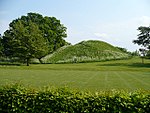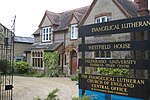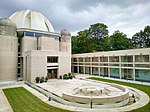Histon Road Cemetery, Cambridge
1842 establishments in EnglandCemeteries in CambridgeCommonwealth War Graves Commission cemeteries in EnglandEdward Buckton Lamb buildingsGrade II* listed parks and gardens in Cambridgeshire

Histon Road Cemetery, formerly Cambridge General Cemetery, is a cemetery in north Cambridge, England, lying off Histon Road, opened in 1842. It is notable as one of only three designs by John Claudius Loudon, who covers it in detail in his influential book On the Laying Out, Planting and Managing of Cemeteries (1843); the other cemeteries associated with Loudon are Bath Abbey Cemetery, and Southampton Old Cemetery (where his plan was rejected). These experiences of practical planning directly affected Loudon's writing on the subject.
Excerpt from the Wikipedia article Histon Road Cemetery, Cambridge (License: CC BY-SA 3.0, Authors, Images).Histon Road Cemetery, Cambridge
Prince Wiliams Court, Cambridge
Geographical coordinates (GPS) Address Nearby Places Show on map
Geographical coordinates (GPS)
| Latitude | Longitude |
|---|---|
| N 52.2157 ° | E 0.1122178 ° |
Address
Prince Wiliams Court 6
CB4 3NL Cambridge
England, United Kingdom
Open on Google Maps










